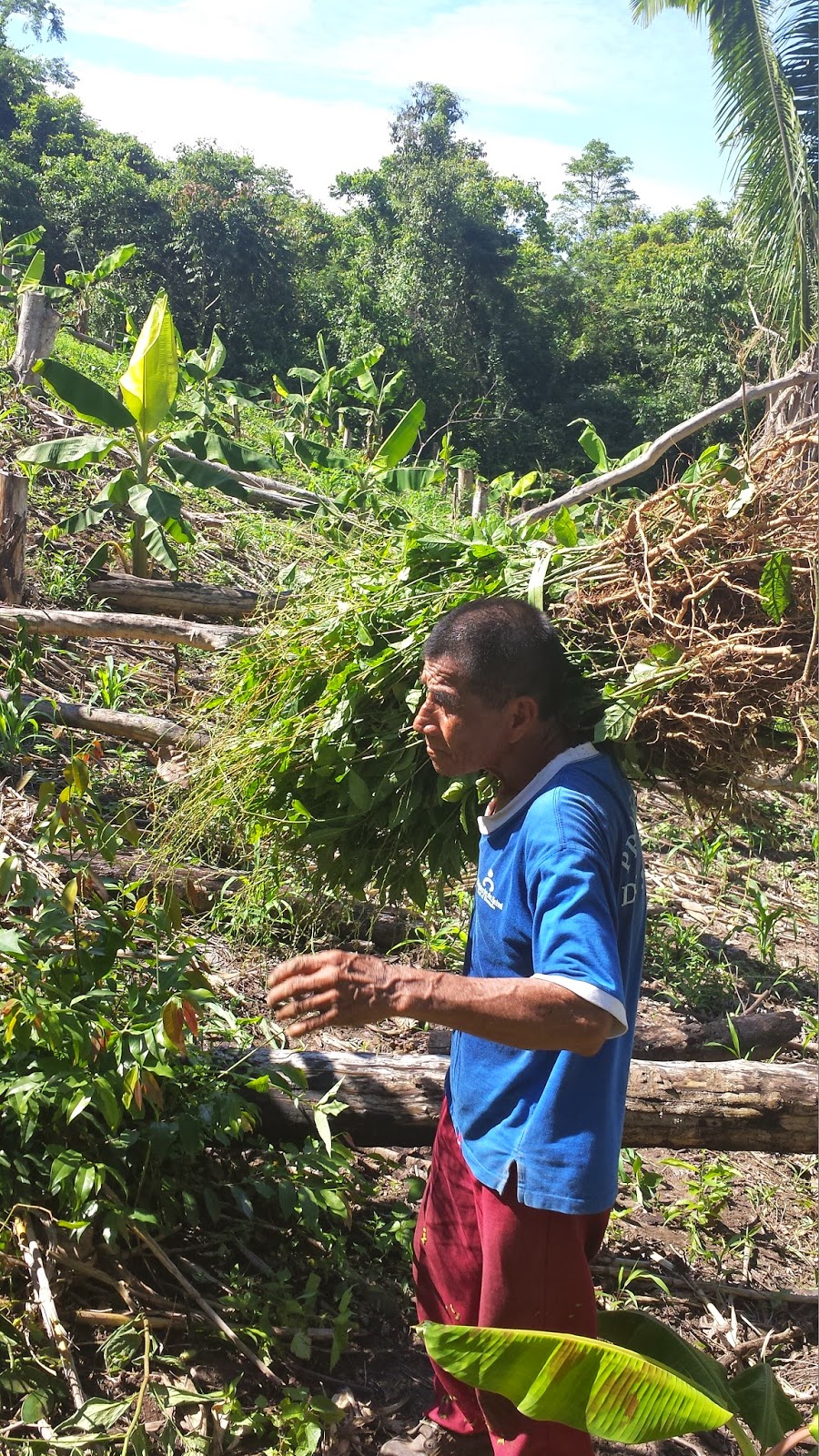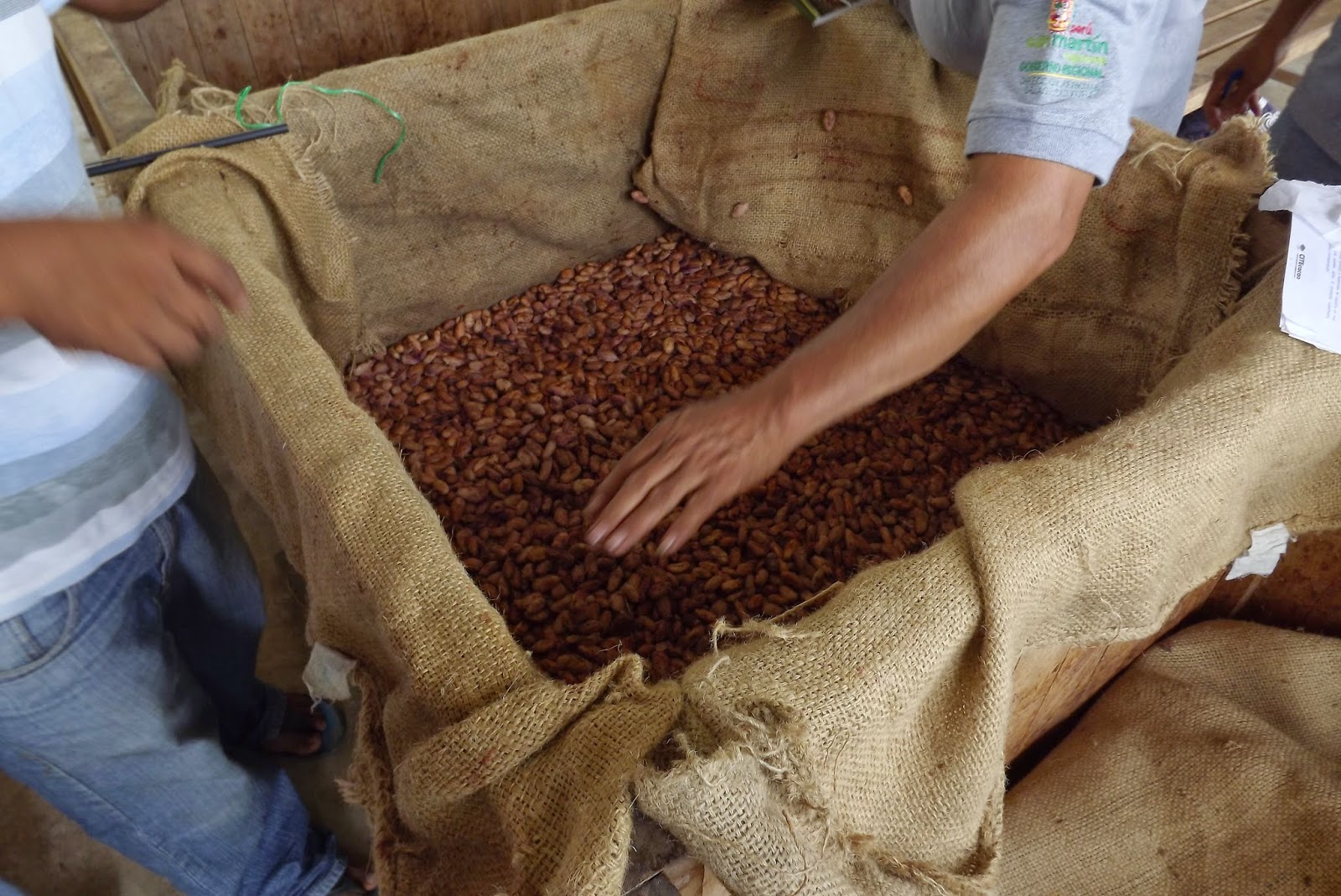The world of Amazonian traditional medicine and medicinal plants is a fascinating one. Some of the plants are beautiful or impressive. Some are plain and innocuous. All must be used with respect. Some medicinal plants exert powerful effects and can be dangerous when used without the knowledge of dosing, side effects and interactions. However, in the hands of those who are knowledgeable in their use, they can be effective for an amazing variety of ailments and health problems. There are many people here in Peru who recognize the benefits of these plants, and who use them in their daily lives. Infusions, plasters, salves, tinctures and aqueous extracts are some of the ways in which they deliver their benefits. Much of the knowledge in their use has been passed from parent to child and from healer to apprentice. This practice continues today, and to speak with a person knowledgeable in traditional medicine is an intriguing experience.
The use of plants in health and for food involves not just the body but also the mind and spirit. Healing is a holistic process and in traditional Amazonian medicine there is a deep awareness of the mind-body-spirit link in the creation and alleviation of disease processes. Plants themselves are seen not simply as matter to be used and consumed but as spirit also, intimately connected to spirit of the earth and through their respectful use, to the spirits of human beings as well. Some plants are called "master plants" or maestros for their effects on the mind and our understanding of the world. Others exert a primarily physical or local effect such as anti-inflammatory action, preventing or dissolving kidney stones or promoting healing. In all cases, their use must be accompanied by respect for their powers. In Peru, many people use traditional medicine and the healing powers of plants alongside occidental (a.k.a. Western) medicine.
 |
| Coca plant |
One of the most famous (infamous) plants of Peru is the Coca plant. This plant has been in use for millennia for the treatment of a multitude of health issues. The leaves are chewed to alleviate hunger and as a stimulant, similar to the caffeine effects of coffee. It is used to treat stomachache, headache, altitude sickness and diarrhea. It is used to promote healing of broken bones, to control asthma and to treat colds and flu. In addition, it's a very good source of vital minerals. It has been an important ingredient in the medical arsenal of natural healers. Its benefits, sadly, have been overshadowed by its exploitation in the production of the illegal and addictive drug cocaine. The demand for cocaine comes primarily from industrialized countries, but the painful effects of drug trafficking are felt most deeply by people in the countries where it is grown and has traditionally been used. Peru, certainly, is among those countries where this pain has been acutely experienced.
 |
| Ajo Sacha roots |
 |
| Ajo Sacha (False Garlic) |
Ajo Sacha is an interesting medicinal plant used to treat a wide variety of health problems. It is a shrubby plant whose leaves, bark and roots have a marked odor of garlic. In traditional Amazonian medicine it is used to treat broncho-pulmonary ailments, rheumatism and other muscle and joint problems. It is a treatment for intestinal parasites, and for alleviation of fever and migraine headaches. It also has been employed as protection against magic such as hexes and spells.
 |
| Jergon Sacha stems |
that reaches 1 1/2 to 2 metres in
height. Its leaves are deeply
lobed and its bark strongly
patterned. It is this patterned
bark which gives it its name, as
the pigmentation resembles the
skin of the snake "jergon". In
fact, it is used as a treatment for
snake bites and to repel snakes.
As an anti-venom the corm
(underground portion of the
stem) is grated and used as a
plaster over the snakebite, and
at the same time it is mixed with
water and taken internally.
 |
| Jergon Sacha leaves |
The leaves are employed as snake repellant by rubbing the feet and hands with them. In addition to these snake-related problems, it is used to treat gastric ulcers, to treat stings of stingrays and skin parasites. It is also employed as an immunostimulant and antiviral agent.
 |
| Young Copaiba Tree |
 |
| Copaiba leaves |
Copaiba is a large tree that can reach the height of 30 meters. Its sap, or resin, has been used traditionally for the treatment of pneumonia and tuberculosis, as a urinary antiseptic and for treatment of gonorrhea. The sap is harvested by drilling a hole in the trunk of the tree or the main underground tap root and collecting the sap that drips out. It is also used in treatment of tonsillitis, nail mycosis, acne, cold sores and for a variety of intestinal problems. It is employed as adjunctive therapy in the treatment of HIV and cancer due to its powerful immunostimulant and antiviral activities.
 |
| Sangre de Grado tree harvested |
Sangre de Grado (also known as Dragon's Blood) is a large tree of the Croton species. It can reach 15 meters in height, and has grey-white bark. When cut the bark exudes a wine-colored latex. Traditional healers have used it for treatment of diarrhea and other gastrointestinal diseases, post-partum hemorrhage, and treatment of wounds, burns and skin ulcers amongst other ailments. In addition it has been used to treat scarring caused by smallpox and chicken pox. It also makes a beautiful ink when mixed with water. Immature trees do not produce good quantities of the resin, but reach maturity in 10-15 years. When mature, the tree is harvested as early in the day as possible because the resin is difficult to extract when the sun has fully risen. The tree is cut down, then the bark is cut with a machete and the resin collected as it drips freely from the cuts.
 |
| Collecting resin from cuts in the bark of Sangre de Grado |
 |
| Young Chuchuwasi tree |
Chuchuwasi is a
master plant, one
whose properties
include both the
physical and the
spiritual realms.
The bark of the Chuchuwasi tree is cut into small pieces and then cooked in water. The resulting mash or maceration is mixed with brandy or pisco and a small glass is drank daily for the treatment of arthritis and other inflammatory conditions. It is also used for treatment of diarrhea, kidney inflammation, intestinal worms and to regulate menstruation. The root is cooked and used for bronchitis and back pain as well as an aphrodisiac. Chuchuwasi is an important plant in shamanism, and is referred to as the house of little people. According to legend, the tree spirit presents itself in the form of an old dwarf that will appear in the dreams to pass on his secrets. During the period of shamanic apprenticeship, a spiritual relationship is formed between the apprentice and the tree, one in which the apprentice approaches the Chuchuwasi spirit with great respect and makes offerings of prayers and tobacco. These offerings and the ongoing respectful relationship allows the shaman to call upon the spirit to share the secrets of the curative properties of the tree. He, in turn, uses the curative properties of the tree as he has been instructed.
In the world of medicinal plants and Amazonian traditional medicine, all things are connected and interdependent, all things are both physical and spiritual beings. This concept of interconnectedness is vital in traditional medicine, and has much to teach all of us regarding respect for the natural world and for our own being. In industrialized countries there is a growing awareness that we cannot treat the body without ignoring the importance of the mind and spirit in creating and alleviating illness. This continues to bring traditional medicine to the consciousness of people around the world. Only when we begin to use our world's natural resources and treat our own bodies with respect for both their power and their fragility, will we begin to reverse the damage we have done. Nowhere is this more evident that in the Amazon.
I will return in the next post with more on the world of traditional medicine in Peru. I hope you find this world of plants interesting and informative and that you look at yourself and the word around you a little bit differently as a result. Consider it food (and medicine) for thought.
Hasta luego mis amigos y amigas!


















.jpg)
























